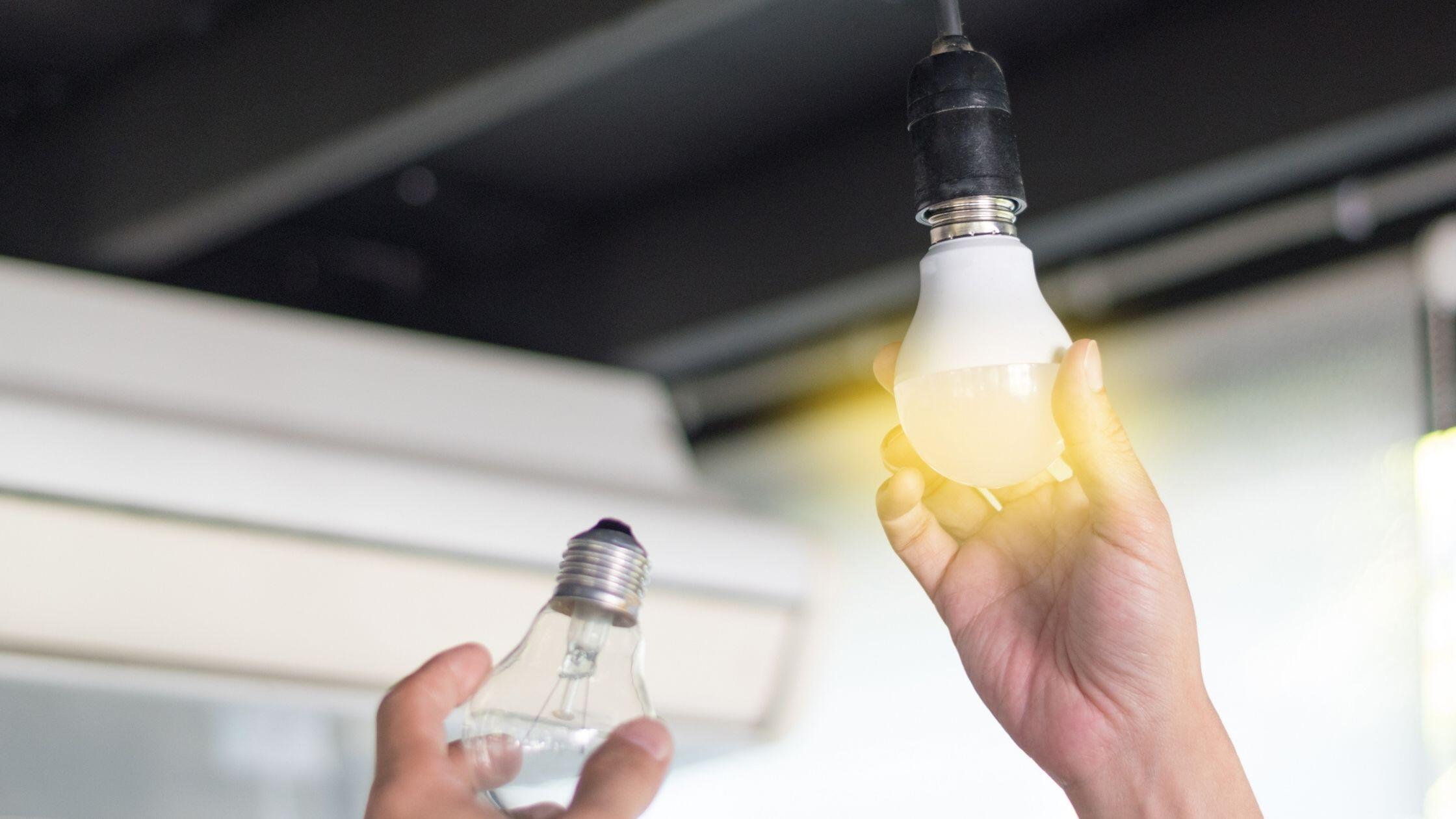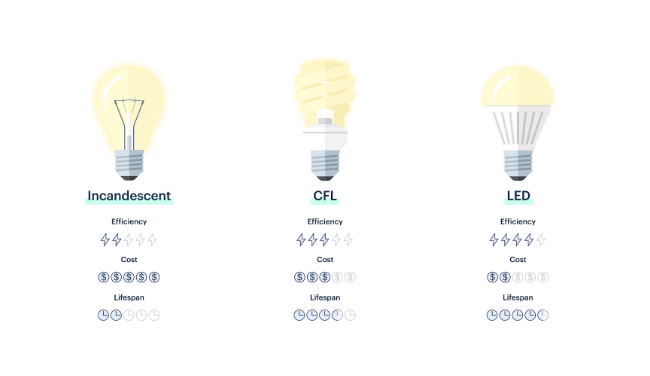
Light bulbs have evolved over the years to include endless options. However, the most common options still remain regular light bulbs and LED light bulbs. But which one should you choose?
Is there truly a difference between them? Could you save money if you make the right choice?
Let’s discuss the true difference between regular and LED light bulbs and which one is the right option for your home.
The 3 Main Light Bulb Choices: Incandescent, CFLs, And LED
There is a significant difference between the three most commonly purchased light bulbs. This includes life span, energy use, and price.
Here are the main distinctions:
- Incandescent – These are the regular light bulbs that we have all been using for decades. However, they are neither energy-efficient nor long-lasting. They may seem like a cheap and quick option, but the disadvantages add up in the long run.
- Compact fluorescent (CFLs) – You may know these as the ‘spiral’ ones that look pretty cool. They are better than incandescent light bulbs, but still not the most energy-efficient option.
- LED – These light bulbs have become the best choice for homes and businesses in recent years. They are the most energy-efficient lights available. Although they are initially more expensive than regular light bulbs, they save both energy and money in the long run.

What Makes LEDs the Best Light Bulb Option?
Although they are often called ‘light bulbs’, technically, LEDs aren’t bulbs. LED stands for ‘light-emitting diode’. This means that LEDs are made up of tiny semiconductors (diodes) which are wrapped in plastic to focus the light and protect the diodes.
While incandescent ones have filaments that glow and produce heat, LEDs have electrons that create light with very little heat. Since so little heat is generated, this also means that LEDs require far less energy to operate.
The most significant features of LEDs are:
- Require little energy to operate.
- Have a much longer life span.
- Use 75% less energy than incandescent light bulbs.
They Cost More, So How do You Save Money with LEDs?
Although LEDs used to be significantly more expensive in the past, they have come a long way since then. Today, the prices of LEDs have come down significantly.
On average, a household in the US has about 50 light bulbs. If you were to replace all of them with LEDs, you would save $300 every year on your energy bills. Sounds good?
If you’d like to start saving money right now, Neeeco can offer you special incentives in partnership with the Mass Save® Program.
Apply Now to Save on Energy Bills
The Mass Save® Program is a special opportunity for residents of Massachusetts to receive a wide range of services, incentives, training, and information about promoting energy efficiency for residents and businesses to manage energy use and related costs.
LED light bulbs are part of the Mass Save® Program incentives, however, this incentive will expire at the end of 2021 – so make use of it now!
To get started, contact us for your no-cost virtual home energy assessment. We will help you receive a huge range of no-cost incentives that will increase your energy savings and reduce your bills.
If you or your business are eligible, you could receive an incentive to replace conventional light bulbs with LED ones at no cost.
Call (781) 309-7540 or contact us to get started with a no-cost Mass Save® home energy assessment.
